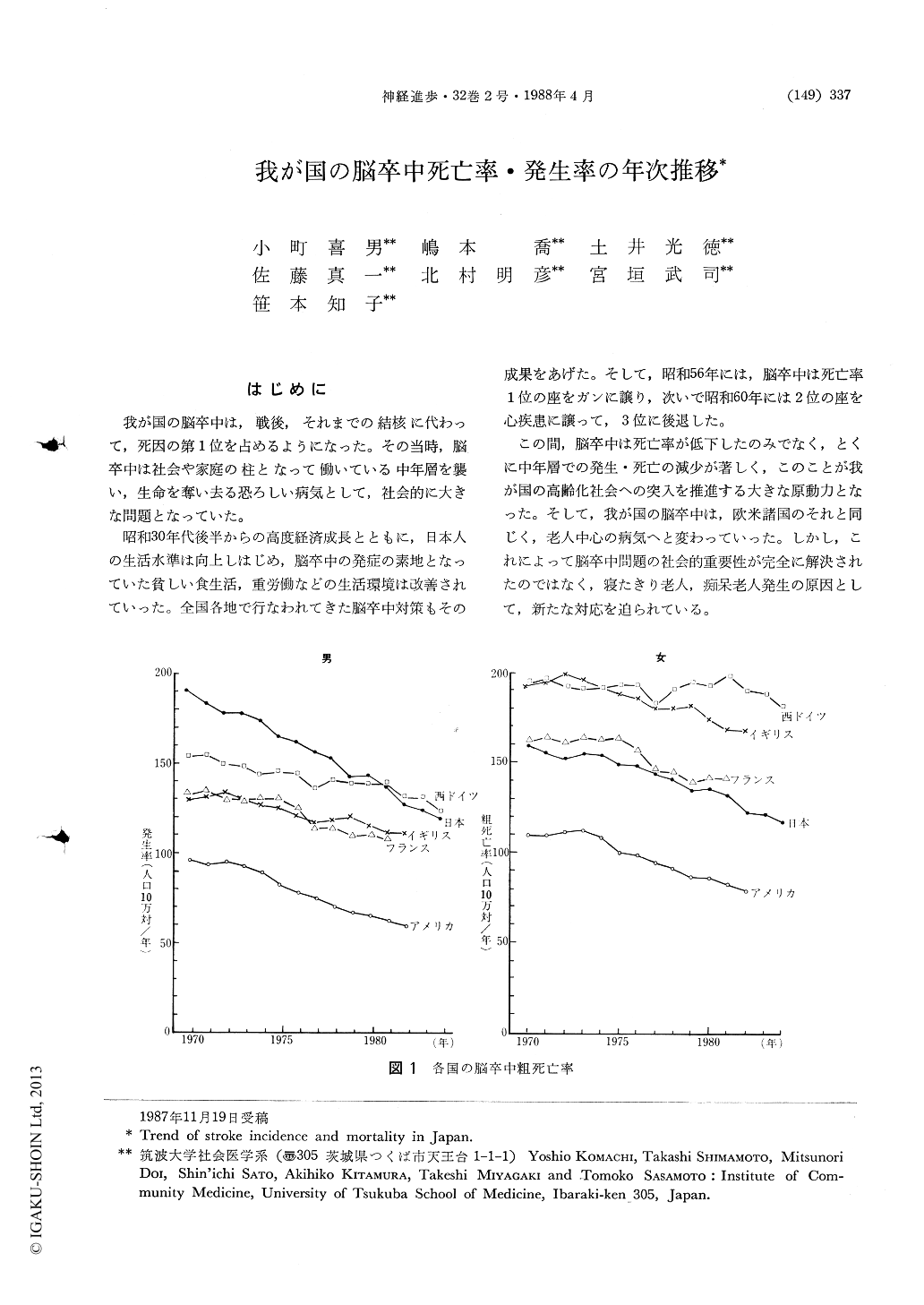Japanese
English
- 有料閲覧
- Abstract 文献概要
- 1ページ目 Look Inside
- サイト内被引用 Cited by
はじめに
我が国の脳卒中は,戦後,それまでの結核に代わって,死因の第1位を占めるようになった。その当時,脳卒中は社会や家庭の柱となって働いている中年層を襲い,生命を奪い去る恐ろしい病気として,社会的に大きな問題となっていた。
昭和30年代後半からの高度経済成長とともに,日本人の生活水準は向上しはじめ,脳卒中の発症の素地となっていた貧しい食生活,重労働などの生活環境は改善されていった。全国各地で行なわれてきた脳卒中対策もその成果をあげた。そして,昭和56年には,脳卒中は死亡率1位の座をガンに譲り,次いで昭和60年には2位の座を心疾患に譲って,3位に後退した。
After the World War II, Stroke took the place of tuberculosis as the first cause of death in Japan. At that time stroke mainly attacked the middle aged people who were playing important roles in the society or in a family. It became one of the top social problems as a "life-threatening" disease.
From the former half of the 1960's, life standard of Japanese began to improve with high economic growth. With that, lifestyle such as poor nutritional status and heavy manual labor, improved, which have long been the fundamental background of stroke.

Copyright © 1988, Igaku-Shoin Ltd. All rights reserved.


